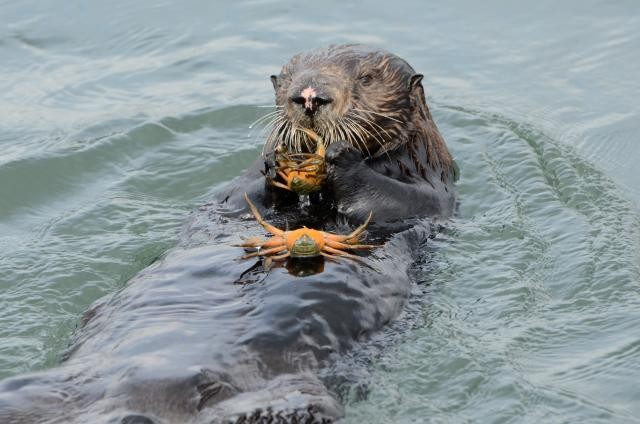
A remarkable environmental success story is unfolding in California's Elkhorn Slough, where an unexpected hero has emerged in the battle against invasive European green crabs - the southern sea otter.
These charismatic marine mammals have managed to accomplish what many states along the West Coast have struggled to achieve despite spending millions of dollars. At Elkhorn Slough National Estuarine Research Reserve, sea otters are devouring between 50,000 to 120,000 invasive green crabs annually, effectively bringing the destructive species under control.
The European green crab, which arrived on the West Coast in the 1980s, has been wreaking havoc on marine ecosystems from California to Alaska. Despite their small size of just four inches, these crabs pose a serious threat to native wildlife, seagrass beds, and valuable shellfish industries.
While Washington state has allocated $12 million to combat the invasion and Oregon encourages daily crab harvesting, the otters at Elkhorn Slough have naturally solved the problem. Their voracious appetite stems from a unique biological need - unlike other marine mammals that rely on blubber for warmth, sea otters must consume large quantities of food daily to maintain their body temperature.
The success story began in the late 1990s when the first male sea otter arrived at the slough. Female otters followed in the early 2000s, and with support from the Monterey Bay Aquarium's rehabilitation program, the population has grown to over 120 otters today.
The impact has been dramatic. Research coordinator Kerstin Wasson notes that green crab numbers have plummeted from around 100 per trap in the early 2000s to fewer than five today. This reduction has created a positive chain reaction in the ecosystem, improving water quality and supporting the recovery of native eelgrass beds.
This natural solution is particularly meaningful given the southern sea otters' own story of survival. Once hunted nearly to extinction for their fur, their population dropped from 300,000 to approximately 50 individuals before receiving protection. Their recovery and subsequent role in controlling invasive species demonstrates nature's remarkable ability to restore balance when given the chance.
The success at Elkhorn Slough offers a powerful lesson in ecosystem management, showing how supporting native species recovery can lead to unexpected benefits in controlling invasive threats. As one researcher noted, these industrious otters have become nature's assistant managers, proving that sometimes the best solutions come in small, furry packages.